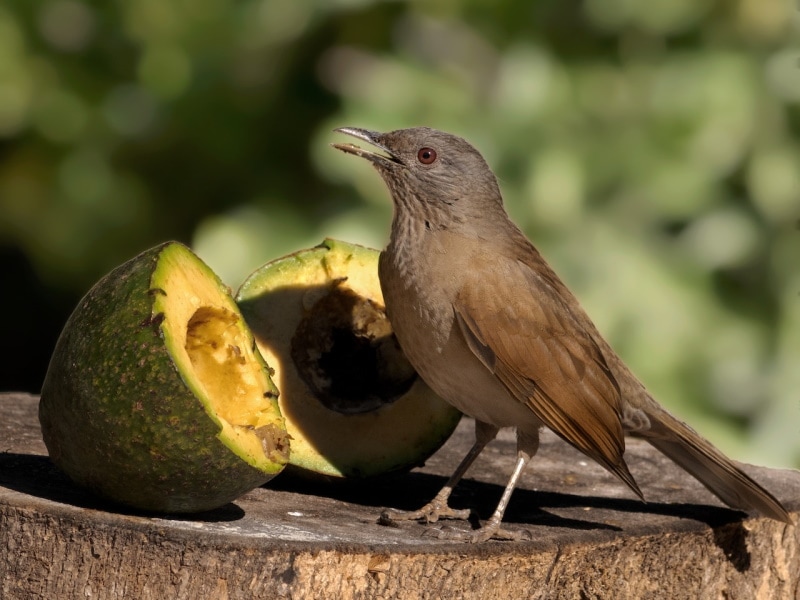Pacific Wren: Field Guide, Pictures, Habitat & Info
Last Updated on

The Pacific Wren is the smallest of the Wrens that you can find in the United States, and its deep brown color helps it blend into the background, making it hard to see if you don’t know where to look. If you or a bird watcher want to find one of these small birds, keep reading as we discuss its habitat, behavior, nesting, diet, and more to help you understand them better.

Quick Facts About the Pacific Wren
| Habitat: | Old growth forests |
| Diet: | Insects |
| Behavior: | Foraging along the ground |
| Nesting: | Build nests in any natural cavity |
| Conservation: | Not at risk |
| Scientific name: | T. pacificus |
| Lifespan: | 3 – 5 years |
Pacific Wren General Description
The Pacific Wren is a small brown bird that rarely grows larger than 5 inches long, with a wingspan between 4.5 and 6.5 inches. Its short tail helps give it a round appearance, and it also has a thin bill. It’s brown overall, with a few darker spots on the wing and tail.
Pacific Wren Range, Habitat, Behavior, Diet & Nesting

Range
You will primarily find the Pacific Wren in the Western United States, especially in Northern California, Oregon, and Washington State. Its range also extends into Canada and up into Alaska.
Habitat
The Pacific Wren prefers old-growth evergreen forests, and it likes to build its nests near fallen trees with upturned roots. After breeding season, you will see them in more diverse habitats, including backyards and parks. These birds also tend to huddle up in nesting boxes to stay warm when temperatures drop.
Behavior
The Pacific Wren prefers to hop along the ground, looking for food in decaying logs and dead trees. Most bird watchers notice that they tend to resemble a mouse or mole more than a bird when they do this. It’s an energetic species that often bobs its head and body while standing still and rapidly beats its wings during flight.
Diet
The Pacific Wren mostly feeds on the insects that it finds in dead trees and decaying wood. It enjoys beetles, flies, caterpillars, termites, and spiders but will also eat berries if available.
Nesting
The male Pacific Wren will begin seeking a mate in early spring. Once successful, the pair will choose a nesting spot in any natural cavity close to the ground, including holes created by woodpeckers and decaying wood. The nest is made of moss, grass, weeds, animal hair, and feathers. The energetic male will build several nests and encourage the female to choose the one that she likes best.

How to Find a Pacific Wren: Birdwatching Tips

What to Listen For
The Pacific Wren is a vocal bird that frequently sings when trying to attract a mate, especially in spring. It produces a rapid series of trilling notes.
What to Look For
The Pacific Wren likes to stay on the ground when looking for food, so when you hear their song, search the ground for decaying wood, and you will likely notice them nearby. It’s an energetic bird that can’t sit still, so its movements will catch your eye.
When to Look
The best time to find the Pacific Wren is early morning during the breeding season when they are busy looking for food and singing songs to attract a mate.
Attracting a Pacific Wren to Your Backyard: Tips & Tricks
You might be able to attract the Pacific Wren to your yard using a nesting box with a predator guard. Install the nesting box before the breeding season begins for the best results. Placing a few decaying logs on your property can help create an inviting environment for the Pacific Wren, which might encourage them to build a nest.
Pacific Wren Conservation: Is this Bird Threatened?
The Pacific Wren is not a threatened species. However, its numbers are on the decline due to habitat destruction and climate change.

Final Thoughts
The Pacific Wren is the smallest of the American Wrens, and you can find it in the extreme northwestern part of the United States and in parts of Alaska. It’s easy to find in the mornings during the mating season because it frequently sings while hopping along the ground, looking for insects. Its quick, steady movements resemble the actions of a mouse or mole, so it can be hard to see at first.
Featured Image Credit By: Neil Yonamine, Pexels
About the Author Ed Malaker
Ed Malaker is a veteran writer who contributes to a wide range of blogs covering information on computer programming, pets, birding, tools, fitness, guitars, and optics. Outside of writing, Ed is often found working in the garden or performing DIY projects in the house. Ed is also a musician, spending his time composing music for independent films or helping people repair their guitars.
Related Articles:
10 Types of Hummingbirds in Arkansas (With Pictures)
8 Types of Hummingbirds in Nebraska (With Pictures)
5 Types of Hummingbirds in Idaho (With Pictures)
3 Types of Hummingbirds in Mississippi (With Pictures)
8 Types of Hummingbirds in Kansas (With Pictures)
5 Types of Hummingbirds in West Virginia (With Pictures)
5 Types of Hummingbirds in Ohio (With Pictures)
Where Do Nuthatches Nest? Nuthatch Nesting Habits Explained
